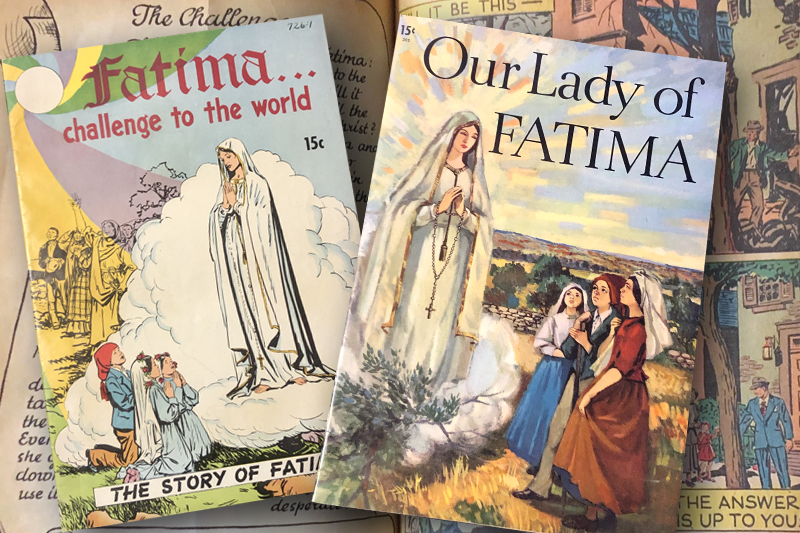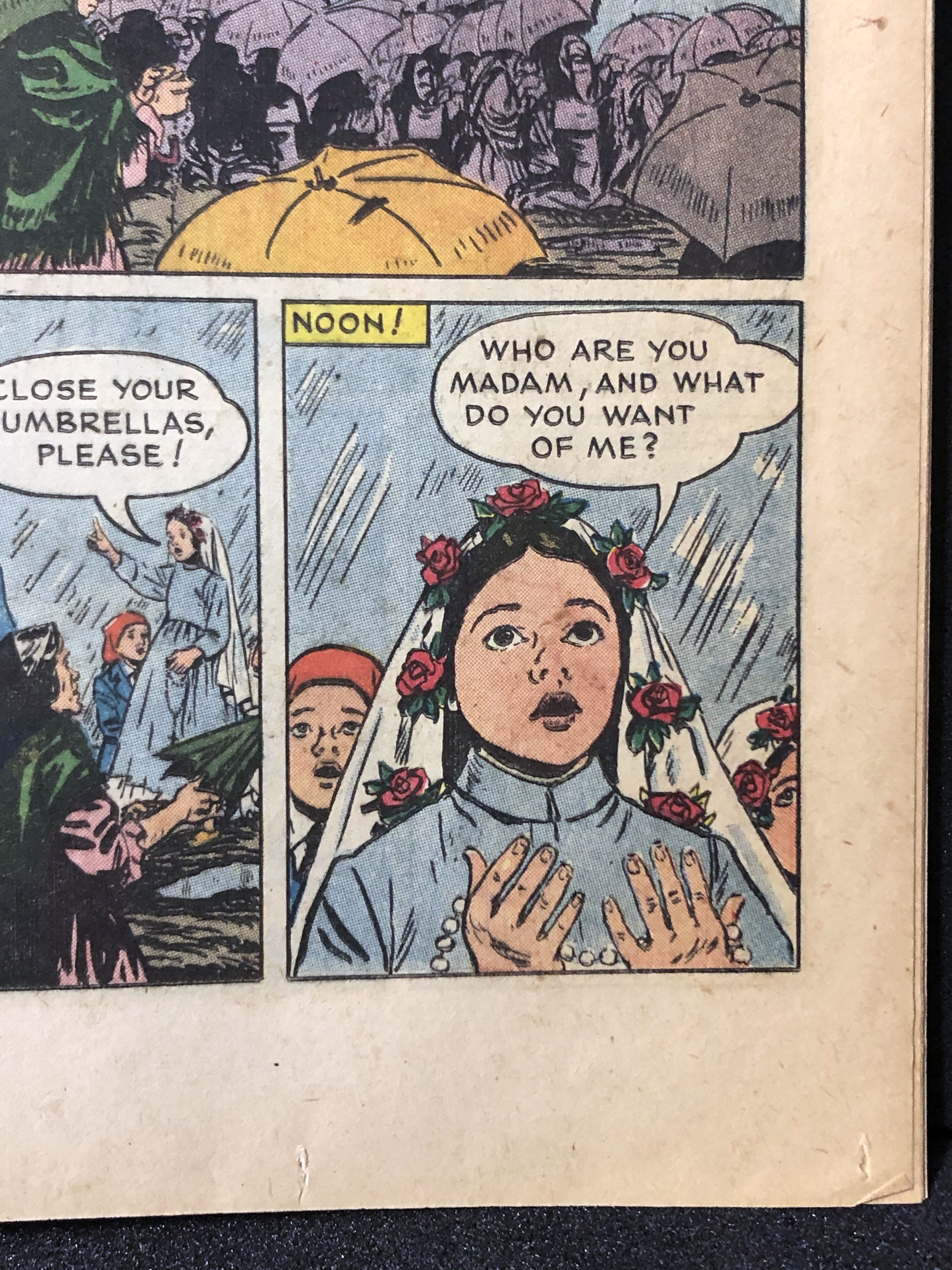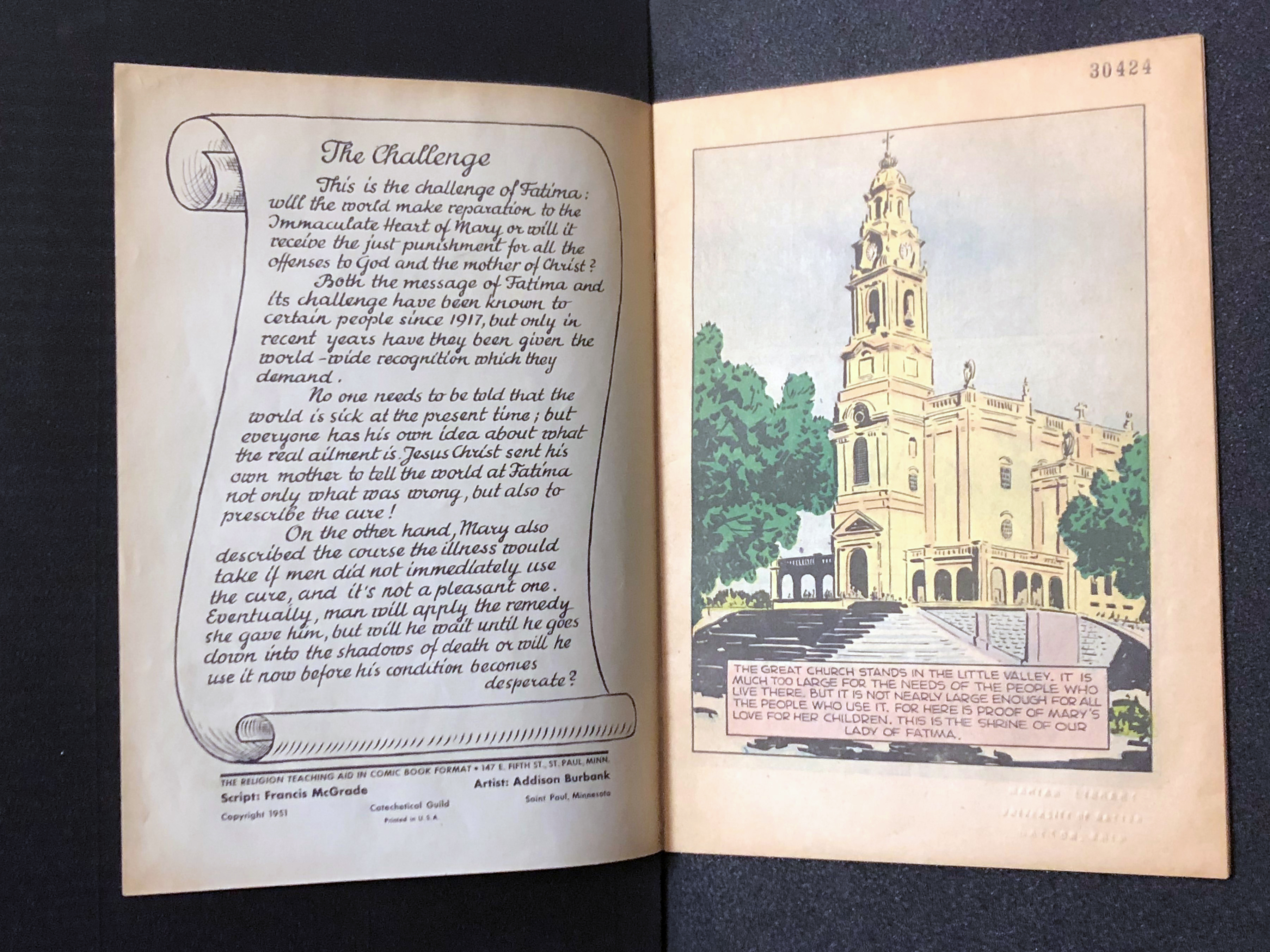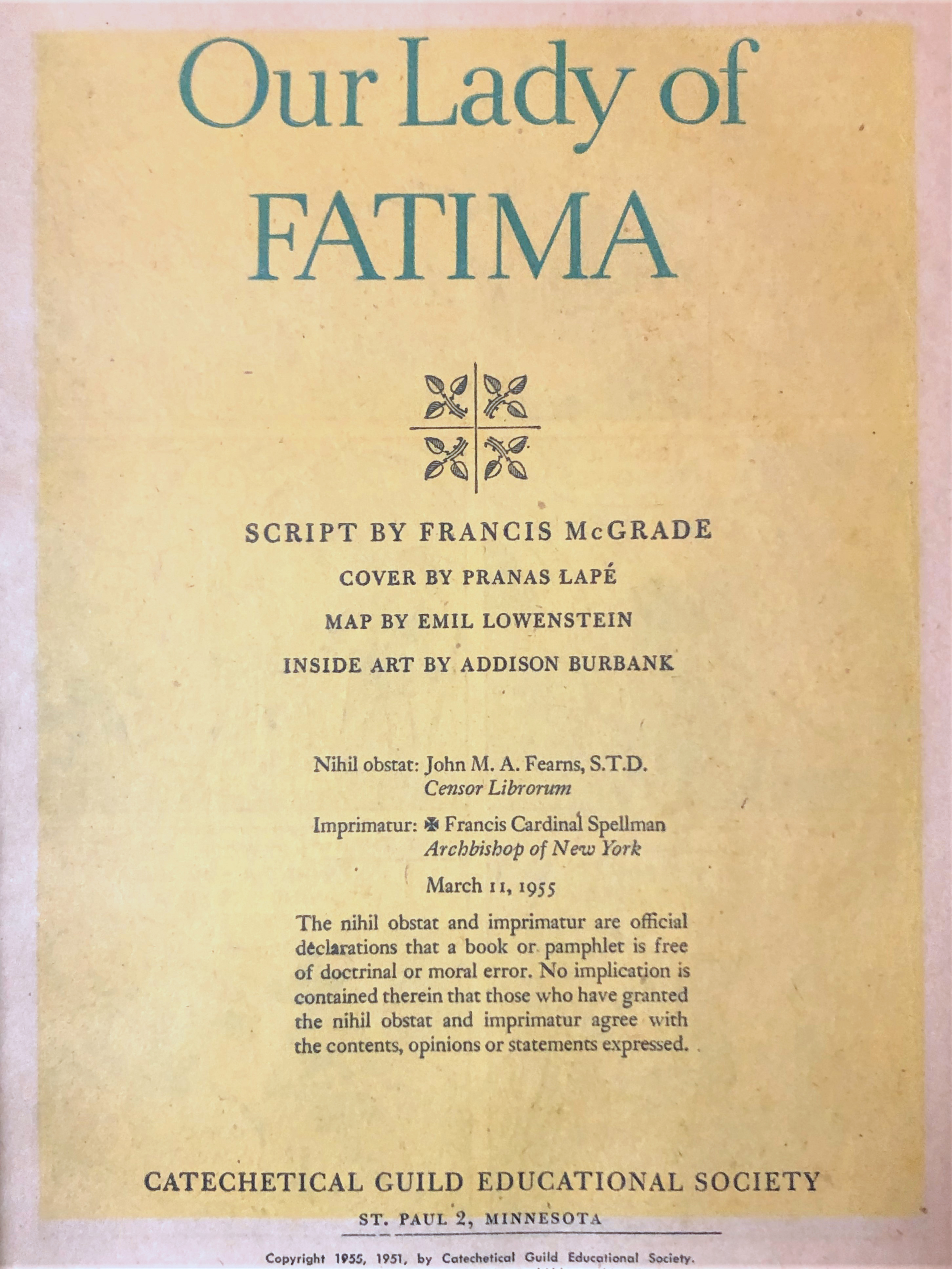Blogs

Our Lady: Wonder Woman of Catholic Comics
By Henry Handley, assistant professor and collections librarian
The Marian Library has many books that document the long history of Catholic printing and publishing, which runs from Gutenberg’s printed indulgences in the 15th century to today. Any one of them could serve as an example of how church authorities shaped the content of thousands of titles, from weighty theological treatises to devotional pamphlets. One format you might not expect to find in a Catholic academic special collections — moreover, in three different editions — is the comic book.
Catholicism in comic book history is probably better known in relation to 1950s-era censorship of secular comic books deemed too violent or lurid for young readers. The National Organization for Decent Literature was not an official arm of the church, nor did it have the authority to remove books from shelves, but it was an undeniable force in what kinds of comics were published and sold and how the public perceived book censorship for decades to come.*
But there were Catholics who also saw comic books’ potential benefit to Catholic devotion. During the 1950s’ “golden age of comics,” decades before Marvel Comics published a John Paul II comic book (which you can find in the U.S. Catholic Special Collection), the Catechetical Guild of St. Paul, Minnesota, published Fatima: Challenge to the World as a “religion teaching aid in comic book format.”
The Marian Library has two editions of Fatima: Challenge to the World with nearly identical covers, along with a republication of most of the comic under the title Our Lady of Fatima in 1955. The first two have a 1951 copyright date, but the change in price from 10 cents to 15 cents suggests the second is a later edition. The first two pages that outline the titular challenge change between these two editions as well. Two panels in the first show a stark choice between a peaceful, civic, and church-centric life and a war-torn future. A bombed-out church and orphaned children recall World War II’s devastation. The second copy still has a scroll describing Fatima’s “challenge” but instead shows a full-page panel of “a great church in a little valley” — the Fatima shrine.
Our Lady of Fatima, also published by the Catechetical Guild and priced at 15 cents, is missing some of the force behind the earlier editions’ “challenge.” Although not described as a “religion teaching aid” or a comic book, it was authorized by the Church with nihil obstat and imprimatur statements that might look familiar to frequent readers of Catholic books. Nihil obstat, here from Censor Librorum (Censor of Books) John M.A. Fearns, was the first of a two-part authorization and indicated that, literally, “nothing stands in the way” of its use in theological and moral education — that there were no objections to its content. The second part was the imprimatur of Cardinal Francis Spellman, which authorized the printing of the book.
But if this version was authorized, did that mean the earlier comics were bad? Not necessarily! Title IV in the 1983 Code of Canon Law covers “instruments of social communication and books in particular” and has some nuance in the approval and condemnation of books aside from the publication of sacred scripture, which has special requirements for the Church’s review. Beyond canon law, publication and circulation of these comics also suggests the history is more complex.
While the two later copies are unbound and stapled with glossy paper covers, the earliest copy was additionally bound in blue library cloth by Our Lady’s Library at Marian (now Marist) College, Poughkeepsie, New York. The same library also collected and bound together multiple pamphlets together according to subject — Fatima, the Immaculate Conception and more. This suggests that although the comic book might not have had official diocesan approval, Marist College librarians wanted to make it available for readers. The Marian Library has the same goal. If you’re interested in researching Catholicism in book history, please contact us.
More information
* For more on the NODL, see O'Connor, Thomas F. “The National Organization for Decent Literature: A Phase in American Catholic Censorship.” The Library Quarterly: Information, Community, Policy 65, no. 4 (1995): 386-414.




